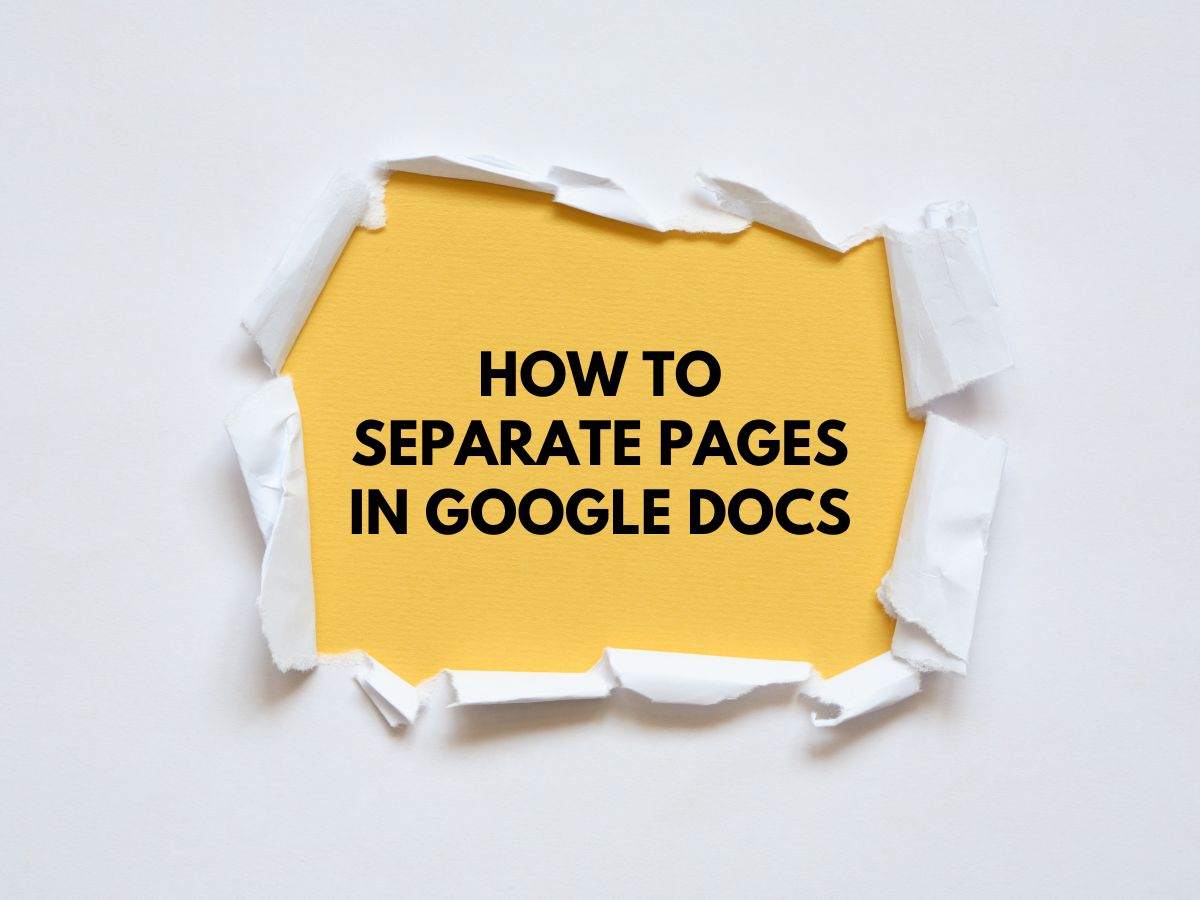How to Separate Pages in Google Docs: A Step-by-Step Guide
Google Docs is a powerful tool for creating and formatting documents, but managing page breaks can sometimes be tricky. Whether you’re preparing a report, manuscript, or academic paper, knowing how to separate pages effectively ensures a polished and professional look.
This guide provides a detailed walkthrough on inserting, adjusting, and removing page breaks in Google Docs, along with answers to common questions.
Why Use Page Breaks in Google Docs?
Page breaks help:
- Organize content logically (e.g., new chapters, sections).
- Prevent awkward text splits between pages.
- Improve readability for printed documents.
Step-by-Step Guide to Separating Pages in Google Docs
Step 1: Open Your Google Document
- Go to Google Docs and open the document where you want to insert a page break.
- If you’re starting a new document, create one by clicking Blank under “Start a new document.”
Step 2: Place Your Cursor Where You Want the New Page
- Click at the exact location where you want the new page to begin.
- This could be:
- Before a new section or chapter.
- After a table or image to avoid splitting content.
Step 3: Insert a Page Break
There are three ways to insert a page break:
Method 1: Using the Menu
- Click Insert in the top menu.
- Hover over Break.
- Select Page Break.
Method 2: Keyboard Shortcut (Fastest Method)
- Windows/Linux: Press Ctrl + Enter.
- Mac: Press ⌘ + Enter.
Method 3: Using the Mobile App (Android/iOS)
- Tap where you want the break.
- Tap the + (Insert) button.
- Select Page Break.
Step 4: Check Your Document
- Scroll through your document to ensure the page break appears correctly.
- If text doesn’t move to a new page, check for extra spaces or hidden formatting.
Step 5: Adjust Page Breaks if Needed
- To Delete a Page Break:
- Place the cursor before the break and press Delete.
- Or place the cursor after the break and press Backspace.
- To Move a Page Break:
- Delete the existing break and insert a new one in the desired location.
Also Read How to Change Font Size in a Header in Google Docs.
Advanced Tips for Managing Page Breaks
Preventing Unwanted Page Breaks
- Avoid pressing Enter multiple times to create space (use Spacing settings instead).
- Adjust line spacing (Format > Line & paragraph spacing).
Using Section Breaks (For Different Page Layouts)
- Insert > Break > Section Break (Next Page) lets you change page orientation (e.g., portrait to landscape) for specific sections.
Forcing a Page Break Before a Paragraph
- Highlight the paragraph.
- Go to Format > Paragraph styles > Normal Text > Options > Never collapse.
Viewing Page Breaks Clearly
- Enable Print Layout (View > Show > Print Layout).
- Turn on the Ruler (View > Show Ruler) to see margins and breaks.
FAQs
Q. Can I remove a page break in Google Docs?
Yes. Place your cursor just before the break and press Delete, or after it and press Backspace.
Q. How do I see where page breaks are in my document?
Enable Print Layout (View > Show > Print Layout). Page breaks appear as dashed lines.
Q. Is there a shortcut for inserting a page break?
Yes! Use:
- Windows: Ctrl + Enter
- Mac: ⌘ + Enter
Q. Can I add a page break inside a table?
No, but you can:
- Place the cursor before/after the table and insert a break.
- Split the table into two parts if needed.
Q. How do I prevent a page break from splitting a paragraph?
- Highlight the paragraph.
- Click Format > Paragraph styles > Options > Keep with next.
Q. Why isn’t my page break working?
Check for:
- Extra blank lines (delete them).
- Fixed spacing (adjust in Format > Line spacing).
- Table or image formatting conflicts.
Conclusion On How to Separate Pages in Google Docs
Mastering page breaks in Google Docs helps you create well-structured, professional documents. Whether you’re using menu options, keyboard shortcuts, or adjusting settings, this guide ensures seamless page separation.
For more control, explore section breaks and paragraph settings to fine-tune your document’s layout.







